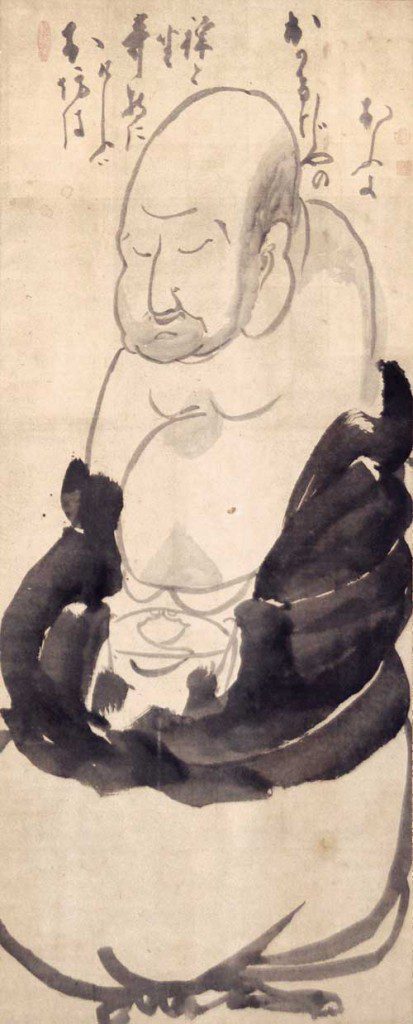What is Zen? A Brief Outline
James Ishmael Ford
Zen is a tradition of understanding and practice, held together over time by lineage.
Let me unravel a little what that understanding, that practice and what that lineage are that together create what is called Zen.
First, understanding.
This insight is how we are in the world. Who we are as we are, is real. And at the very same time that who we are as we are, are one. Now, Zen offers a further push on this last view, pointing us to seeing that “one” is in fact “empty.” This insight comes as natural as our breath, and people spontaneously awake to it within many religions and without any religion. Indeed, if everyone who taught this nondual reality were killed today, tomorrow people would be spontaneously experiencing it, and new schools would emerge to share and refine the insights found within our human hearts and minds.
And this nondual understanding, perspective, insight as it is expressed within Zen draws upon a variety of specific historical sources. At root it is found within the insights and teachings of Gautama Buddha. And Zen is ultimately a school of Buddhism. Zen’s understanding, its vocabulary and its specific approach to the universal insights of the nondual took its mature development in China where the wisdom of Buddhism encountered the perspectives of that ancient culture, including Confucianism and particularly Taoism.
Often people think that Zen is just this perspective of awakening here and now. But in fact this is a narrow use for the term Zen introduced to the west by D. T. Suzuki. Suzuki was a seminal figure in the introduction of Zen to the West. Over many years he wrote and published extensively in the English language about Zen’s wonderful and liberating insight, eloquently presenting Zen’s nondual stance in this world sometimes summarized as not one, not two. He was so eloquent that this use for the word Zen caught the imaginations of many people, including philosophers and artists and poets and writers and musicians. It is probably not possible to overstate Suzuki’s influence on our western take on Zen.
He de-emphasized and sometimes ignored much of what Zen is and how it manifests, emphasizing an a-historical stance. All very lovely, if a tad on the abstract side. But in fact there is more to Zen. In fact to limit Zen to its assertion about reality disconnected to life, and not life in general, but to your life and mine is to miss not only what that insight actually is, but also how one can find her or his own way to it. Zen’s emphasizes the identity of form and emptiness and its Chinese and later Japanese synthesis as the teaching of original awakening, were ultimately refined by master Eihei Dogen as the oneness of practice and awakening.
And so the second of the three major facets of what is Zen is meditation. Here we get to the heart of the word Zen, which is a Japanese pronunciation of the Chinese pronunciation of the Sanskrit term dhyana – meditation. In short Zen specifically is a school of Buddhism focused on the disciplines of meditation. Or, rather Zen is focused mostly on two disciplines, each of them evolving out of that meeting between Indian Buddhism and the rich spiritual culture of China.
The first of these, the baseline practice of Zen is Mozhao chan, the Zen of silent illumination. In Japanese it is called shikantaza, just sitting. The practice has three basic elements. Sit down. Shut up. Pay attention. This is the universal solvent of the spiritual dilemma. It is the manifestation of practice/awakening as presented by Dogen and a host of others.
The other practice is koan introspection, Kanhua chan, the Zen of words. In Japanese this is called koan introspection practice, where fragments of stories, anecdotes, bits of poetry are all used to help the individual stand in the place of emptiness, of form, of the various permutations of these twin realities.
It is not possible to think of an authentic Zen without one or both of these disciplines. There are also a host of additional practices and disciplines, most notably a monastic encounter developed in China and modified in other East Asian Buddhist countries. All part of what Zen is.
And, lastly, that over time, and that lineage part.
Lineage is a Chinese thing. It was attached by and to the founders of the Zen school as it emerged in early Medieval China. It is based in a mythic connection to the Indian school and back to Gautama Siddhartha himself. It becomes historical around the time of the fifth ancestor, Daman Hongren in the seventh century. It isn’t magic. It is a line of people trained and acknowledged as teachers. Some are amazing and wonderful. Others are not. But there’s a feedback loop, in that there are real human beings continuing the line and a set of practices they transmit in support of that astonishing insight into who and what we are.
So, sometimes the teachers aren’t worth the powder it would take to blow them away, but the practices themselves carry the tradition. At other times people of amazing insight and character breath new life into the presentation of these practices.
And over time there is mutation and change, growth and decline and renewal.
And, so far, and right into this time and place, there are those who have caught the insight, who have investigated the matter through the practices and guidance of the teachers within the lineage, and who from that continue to bring this healing way into the world.
Which, sadly, desperately needs it.













